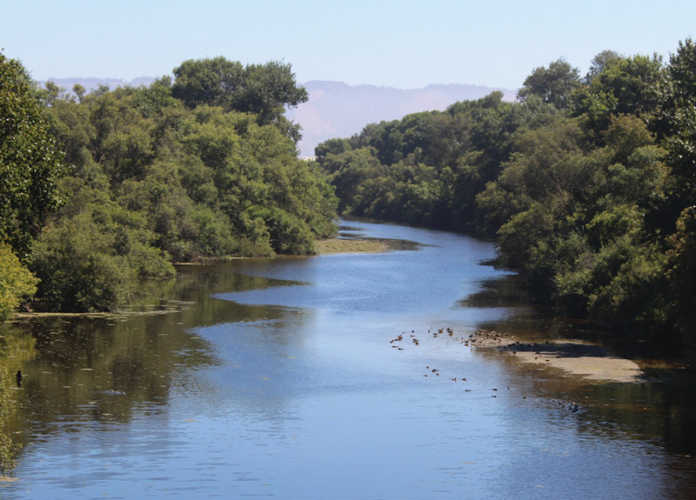WATSONVILLE—The National Association of Counties (NACo) recently renewed its call to have the U.S. Army Corps of Engineers change how it distributes its flood control funding.
Santa Cruz County Supervisor Zach Friend, a NACo board member, says that, too often, funding decisions for federal flood control projects often come down to a cost-benefit analysis that typically disadvantages low-income communities such as Watsonville and the town of Pajaro.
“These funding decisions often require the cost of the project to be less than the anticipated savings to the federal government if the project were built,” he said in an email.
This means that homes and land in low-income communities have lower replacement value than those in higher-income communities, Friend said.
In addition, those calculations don’t include the value of agricultural land, even if the damage to that property can be in the tens of millions of dollars and will impact the local economy and livelihood of the residents, Friend said.
This is why the Pajaro Levee project sat without approval for decades by the federal government, Friend said.
NACo is a national organization that represents more than 3,000 counties across the country, including California’s 58 counties. Every year members propose resolutions that, if approved, are woven into the organization’s advocacy with federal lawmakers.
“Using funding formulas that favor wealthy neighborhoods over disadvantaged communities is an injustice that must be corrected,” Friend said. “I am pleased to have the support of my fellow county representatives across the U.S. in seeking to correct this error so that all communities can compete for funding on a level playing field.”
The long-awaited Pajaro River Flood Risk Management Project is in the design phase, but requires additional funding before the project can move into the construction phase, county spokesman Jason Hoppin said.
But a massive backlog of projects nationwide leaves the Army Corps of Engineers prioritizing its funding based on several factors, including cost-benefit analyses.
Attempts to upgrade the system date back decades. Built in 1949, the levee breached and caused flooding in 1955, 1958, 1995 and most recently in 1998, when Pajaro was severely damaged and acres of farmland were destroyed.
The March 1995 flood caused more than $95 million in damage to the city and to 3,300 acres of agricultural land and forced evacuation of hundreds of families.
The Pajaro River Flood Risk Reduction Project was authorized by the federal Flood Control Act of 1966, and local leaders have been working with the Army Corps since then to secure the authority for construction.
The Pajaro River levee system now protects roughly 55,000 people.






